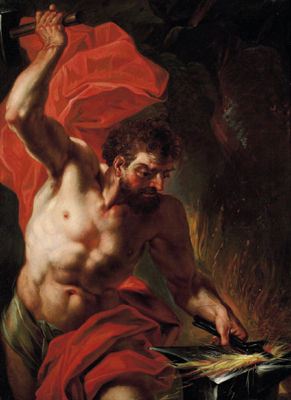| Revision as of 10:26, 29 March 2002 view sourceFredbauder (talk | contribs)2,319 editsmNo edit summary← Previous edit | Revision as of 10:27, 29 March 2002 view source Fredbauder (talk | contribs)2,319 editsmNo edit summaryNext edit → | ||
| Line 1: | Line 1: | ||
| A <b>volcano</b> is a place where ] erupts from the surface of a planet. Material extruded during an eruption may include molten rock, ], superheated gas, volcanic ash or chunks of rock. One way of classifying volcanos is by the type of material erupted, which also affects the shape of the volcano: | A <b>volcano</b> is a place where ] erupts from the surface of a planet. Material extruded during an eruption may include molten rock, ], superheated gas, volcanic ash or chunks of rock. One way of classifying volcanos is by the type of material erupted, which also affects the shape of the volcano: | ||
| *The Lava Shield: |
*The Lava Shield: ] and ] contain examples of volcanos which extrude huge quantities of lava which gradually builds up to form a tall wide mountain. Their lava is very fluid and solidifies as ]. The largest lava shield, Mauna Loa, is 30,000 feet high (it sits on the sea floor); and 75 miles in diameter. | ||
| *Smaller versions of the lava shield include the Lava Dome, Cone, and Mound. | *Smaller versions of the lava shield include the Lava Dome, Cone, and Mound. | ||
Revision as of 10:27, 29 March 2002
A volcano is a place where magma erupts from the surface of a planet. Material extruded during an eruption may include molten rock, lava, superheated gas, volcanic ash or chunks of rock. One way of classifying volcanos is by the type of material erupted, which also affects the shape of the volcano:
- The Lava Shield: Hawaii and Iceland contain examples of volcanos which extrude huge quantities of lava which gradually builds up to form a tall wide mountain. Their lava is very fluid and solidifies as basalt. The largest lava shield, Mauna Loa, is 30,000 feet high (it sits on the sea floor); and 75 miles in diameter.
- Smaller versions of the lava shield include the Lava Dome, Cone, and Mound.
- If the magma contains a lot of silica the lava is viscous (not very fluid) and is pushed up in a blob which will then solidify, Lassen Peak in California is an example. This type of volcano has a tendency to explode because it easily gets plugged up. Mt. Pelée on the island of Martinique for example.
- Cinder Cones result from eruptions that throw out pieces of rock that build up around the vent. These can be relatively short lived and produce a hill perhaps 1000 feet high.
- Strato-Volcanos such as Mt. Fuji in Japan, Vesuvius in Italy, Mt. Erebus in Antarctica, and Mt. Rainier in Washington State are tall conical mountains composed of both lava and rocks.
Volcanoes are usually situated either at the boundaries between tectonic plates or over hot spots. Volcanoes may be either dormant (having no activity) or active (near constant expulsion and occasional eruptions), and change state unpredictably.
Volcanoes on land often take the form of flat cones, as the expulsions build up over the years. Under water, volcanoes often form rather steep pillars and in due time break the ocean surface in new islands.
Science has not yet been able to predict with absolute certainty when a volcanic eruption will take place, but significant progress in judging when one is probable has been made in recent time.
Volcanic activity is often accompanied by earthquakes, hot springs and geysers. Famous volcanoes include Mount Etna, Mount Hekla, Vesuvius, Mt. Fuji, and Mount Saint Helens
Public domain picture from NASAof Tambora, Indonesia.
Further Reading
Volcanos by Cliff Ollier, Published by Basil Blackwell, Oxford, UK, 1988, ISBN: 0-631-15664-X (hardback), ISBN: 0-631-15977-0 (paperback).
